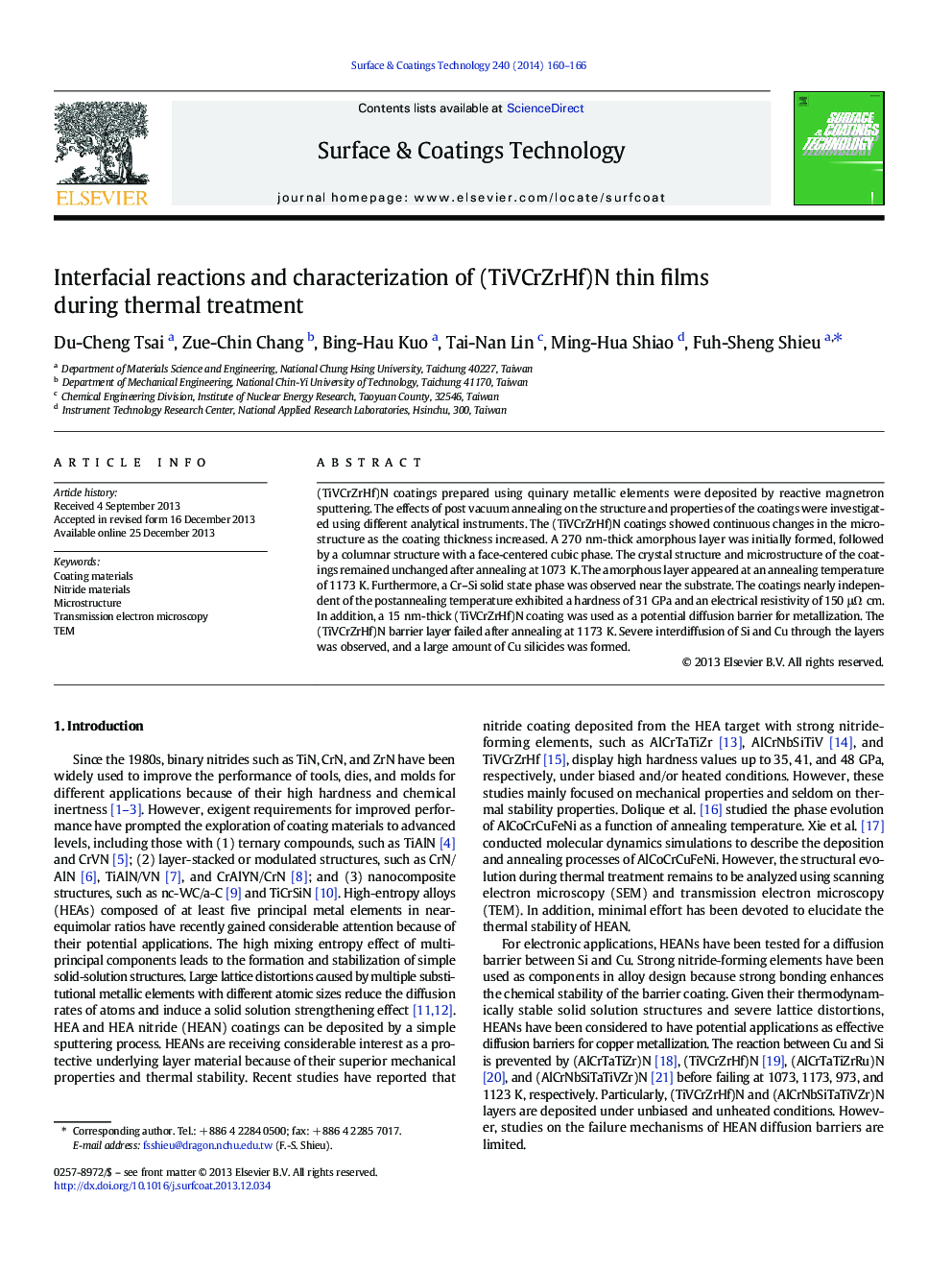| Article ID | Journal | Published Year | Pages | File Type |
|---|---|---|---|---|
| 8028223 | Surface and Coatings Technology | 2014 | 7 Pages |
Abstract
(TiVCrZrHf)N coatings prepared using quinary metallic elements were deposited by reactive magnetron sputtering. The effects of post vacuum annealing on the structure and properties of the coatings were investigated using different analytical instruments. The (TiVCrZrHf)N coatings showed continuous changes in the microstructure as the coating thickness increased. A 270 nm-thick amorphous layer was initially formed, followed by a columnar structure with a face-centered cubic phase. The crystal structure and microstructure of the coatings remained unchanged after annealing at 1073 K. The amorphous layer appeared at an annealing temperature of 1173 K. Furthermore, a Cr-Si solid state phase was observed near the substrate. The coatings nearly independent of the postannealing temperature exhibited a hardness of 31 GPa and an electrical resistivity of 150 μΩ cm. In addition, a 15 nm-thick (TiVCrZrHf)N coating was used as a potential diffusion barrier for metallization. The (TiVCrZrHf)N barrier layer failed after annealing at 1173 K. Severe interdiffusion of Si and Cu through the layers was observed, and a large amount of Cu silicides was formed.
Related Topics
Physical Sciences and Engineering
Materials Science
Nanotechnology
Authors
Du-Cheng Tsai, Zue-Chin Chang, Bing-Hau Kuo, Tai-Nan Lin, Ming-Hua Shiao, Fuh-Sheng Shieu,
